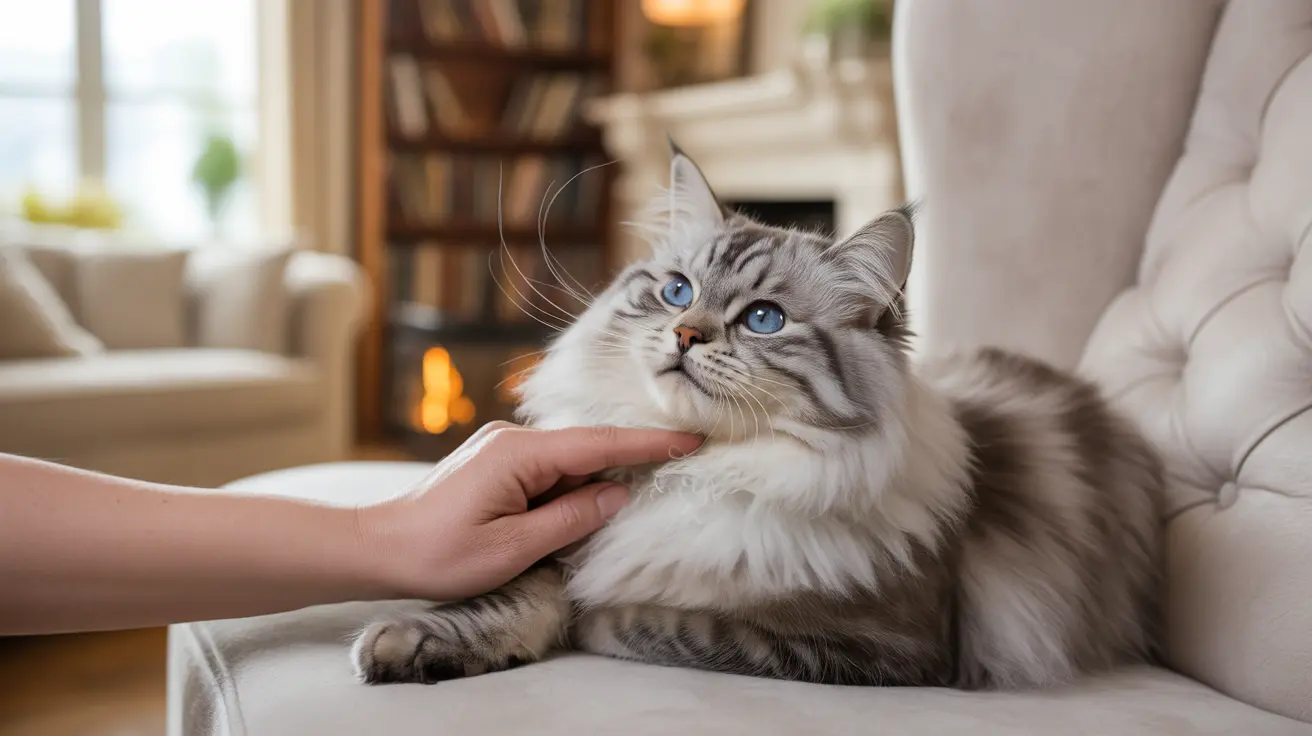The Pleasure Centers: Why Cats Crave Chin Scratches
Cats' chins are packed with sensitive nerve endings that make scratching particularly pleasurable. These nerve endings, combined with specialized scent glands called sebaceous glands, create a dual-purpose sensation that cats find irresistible. When you scratch your cat's chin, you're essentially activating their natural feel-good response while helping them mark their territory.
The concentration of these sensory receptors means that gentle scratching can trigger the release of endorphins, creating a natural high that explains why many cats become visibly relaxed and content during chin scratches.
The Social Bonding Aspect
When cats allow you to scratch their chin, they're displaying a remarkable level of trust. The chin and neck area are vulnerable spots for cats, and by exposing these areas to you, they're demonstrating their confidence in your relationship. This behavior mirrors the social grooming observed between cats who share strong bonds in the wild or in multi-cat households.
Scent Marking and Territory
Every time your cat receives chin scratches, they're also engaging in scent marking through their facial glands. This behavior serves multiple purposes:
- Marking you as part of their trusted social group
- Creating familiar scent markers in their environment
- Establishing territory boundaries
- Reinforcing social bonds within the household
Health Benefits of Chin Scratches
Beyond the obvious pleasure factor, chin scratches can provide several health benefits for cats:
- Help distribute natural oils throughout their fur
- Assist in removing loose hair and dead skin cells
- Provide relief from minor itching or irritation
- Promote relaxation and stress reduction
- Support emotional well-being through positive social interaction
Signs Your Cat Enjoys Chin Scratches
Most cats will clearly communicate their enjoyment of chin scratches through specific body language cues:
- Tilting their head to expose their chin
- Purring enthusiastically
- Pushing their face against your hand
- Keeping their eyes half-closed in contentment
- Maintaining a relaxed body posture
When to Be Cautious
While most cats love chin scratches, it's important to monitor their reaction and physical condition. Watch for signs of skin problems such as:
- Redness or inflammation
- Excessive scratching or rubbing
- Black spots or acne-like bumps
- Hair loss or scabbing
- Signs of discomfort when touched
Frequently Asked Questions
Why do cats love getting their chin scratched so much?
Cats love chin scratches because this area contains numerous nerve endings and scent glands that make the experience physically pleasurable. The sensation triggers the release of feel-good hormones while allowing them to mark their territory through scent glands.
How does chin scratching help strengthen the bond between cats and their owners?
Chin scratching mimics social grooming behavior among cats and requires trust from your pet. When cats allow this interaction, it builds mutual trust and reinforces positive associations, strengthening the human-cat bond.
Can chin scratches help relieve my cat's itching or skin irritation?
Yes, gentle chin scratches can provide relief from minor itching. However, if your cat shows signs of persistent skin irritation, consult a veterinarian as it may indicate an underlying condition requiring treatment.
What do cats' pheromones have to do with their enjoyment of chin scratches?
Cats have scent glands under their chin that release pheromones during scratching. These chemical signals help mark territory and create familiar scents that make cats feel secure in their environment.
How can I tell if my cat wants chin scratches or is uncomfortable with them?
Watch your cat's body language. If they tilt their head up, push against your hand, or purr, they're enjoying it. If they pull away, flatten their ears, or show signs of aggression, they're uncomfortable and the interaction should stop.
Final Thoughts
Understanding why cats like chin scratches helps us better appreciate this unique aspect of feline behavior. By recognizing the physical, social, and emotional components of this interaction, we can strengthen our bonds with our cats while respecting their preferences and boundaries.






